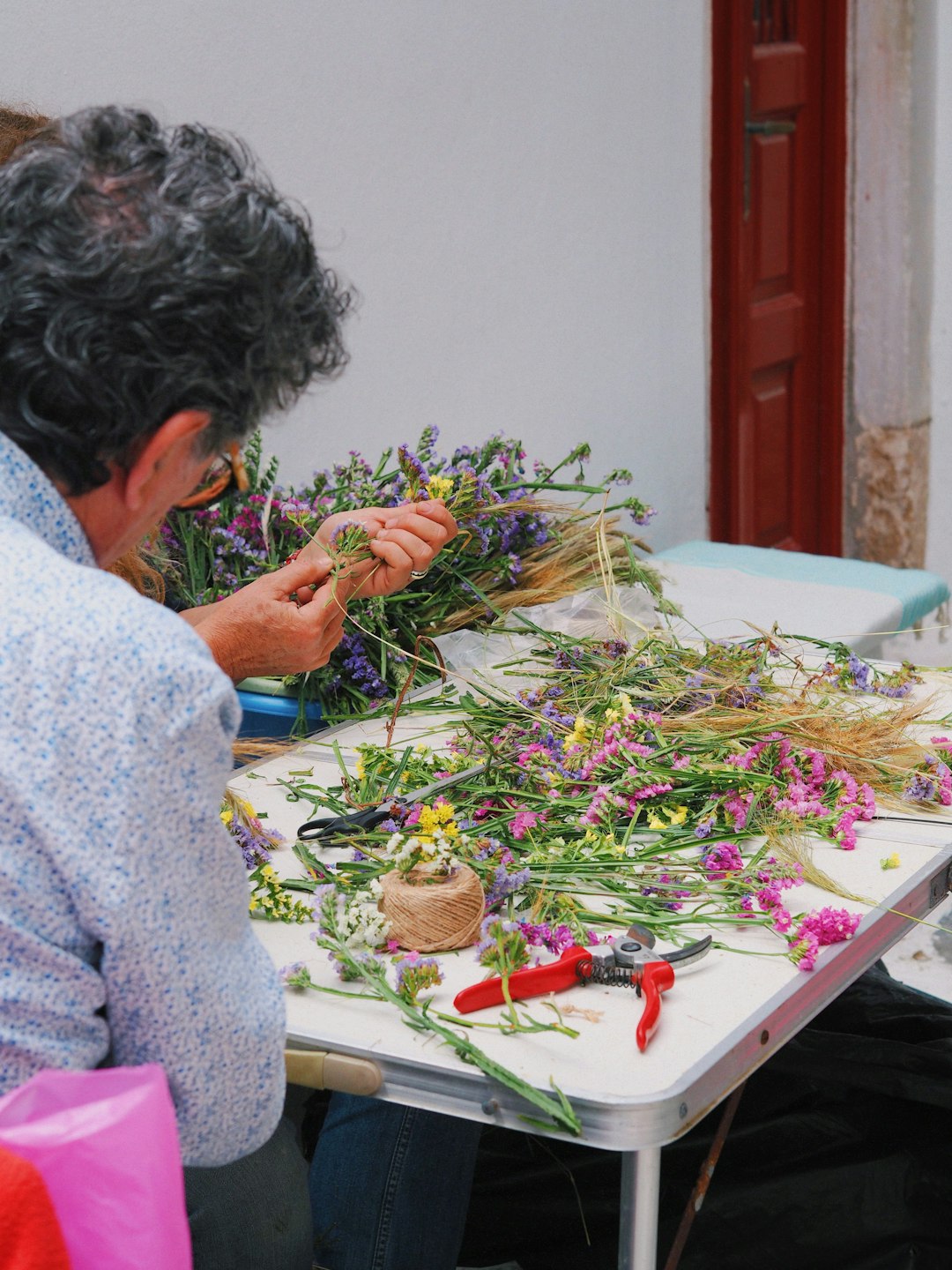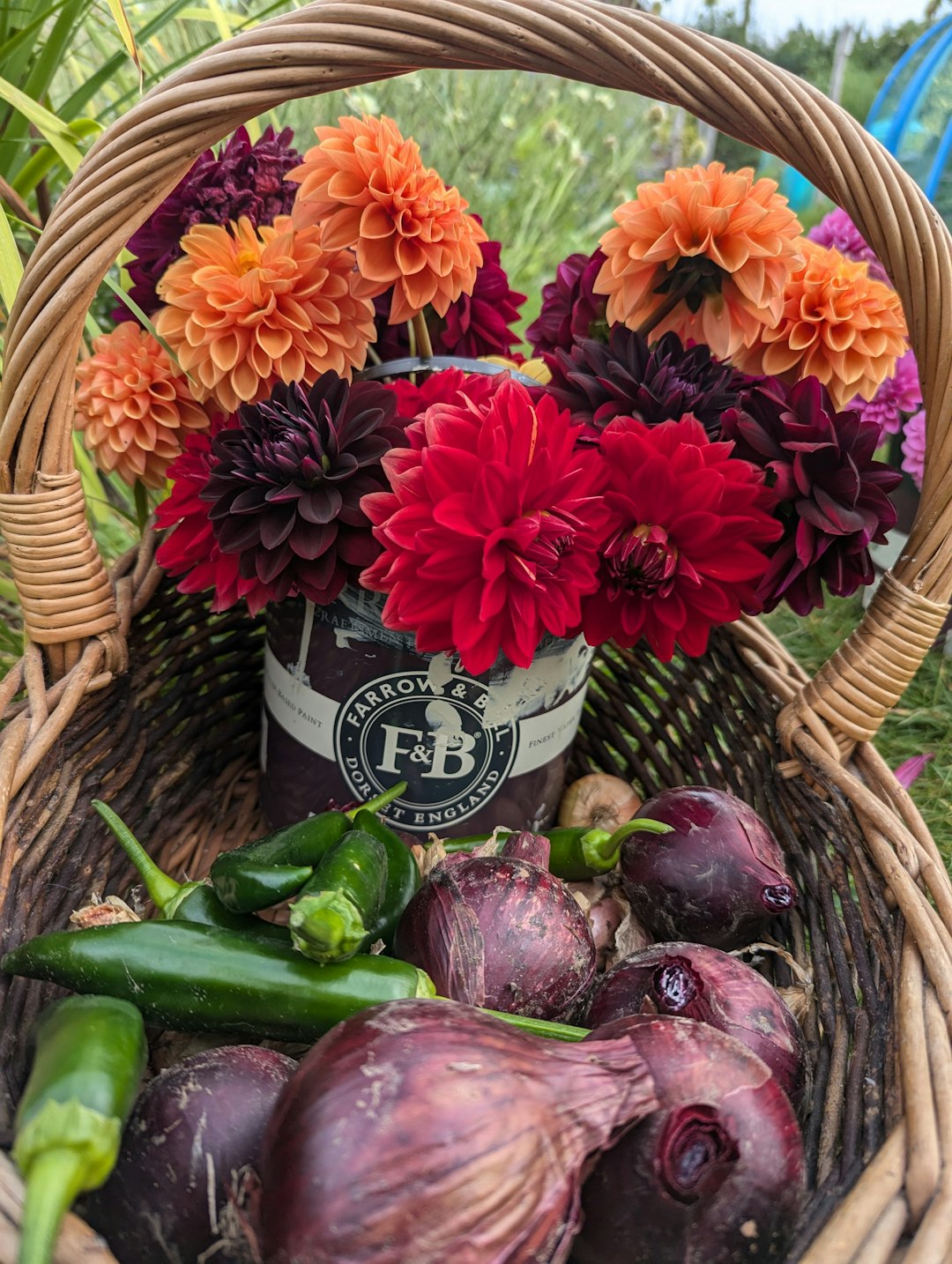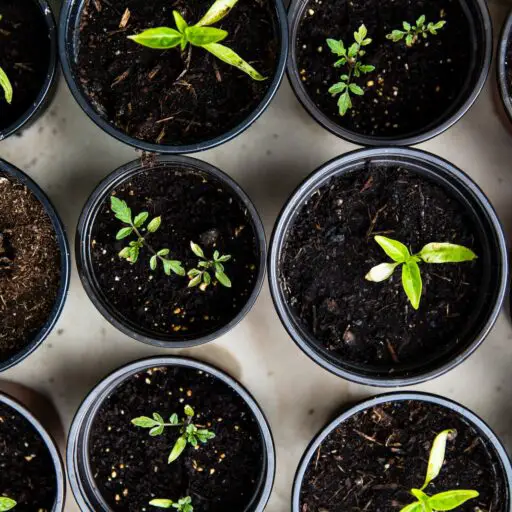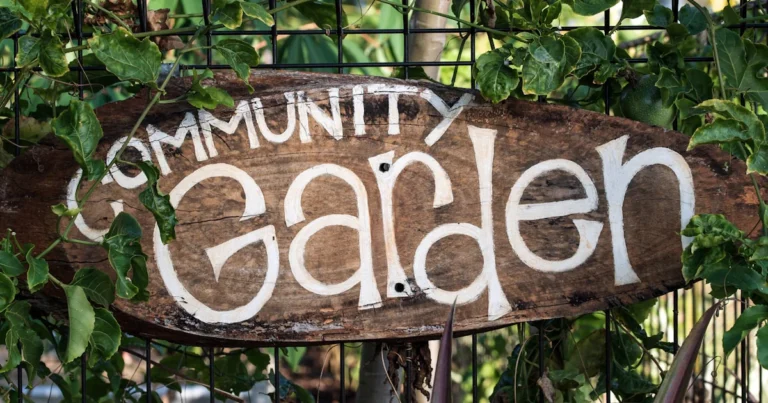Support our educational content for free when you purchase through links on our site. Learn more

Imagine turning a vacant urban lot into a thriving oasis where neighbors harvest fresh veggies, kids learn about nature, and the whole community blossoms together. Sounds like a dream, right? But how successful are community gardens really? Are they just pretty patches of green, or do they deliver tangible benefits that transform neighborhoods?
In this article, we dig deep into the roots of community gardening success—from boosting food security and improving health to fostering social bonds and greening cities. Backed by inspiring stories, hard data, and expert insights from our team at Community Gardening™, you’ll discover 8 surprising ways these gardens cultivate more than just plants. Plus, we’ll share the secret ingredients that make some gardens flourish while others struggle, and how you can get involved or start your own patch of paradise.
Ready to uncover the true power of community gardens? Let’s dig in!
Key Takeaways
- Community gardens increase fresh produce intake by up to 10% and improve food security in underserved areas.
- They strengthen social cohesion, bringing diverse neighbors together and reducing isolation.
- Gardens contribute to urban sustainability through composting, water conservation, and greening vacant lots.
- Physical and mental health benefits include increased activity and reduced stress.
- Success depends on visionary leadership, secure land tenure, and inclusive participation.
- Inspiring case studies from West Hollywood, Escondido, and Berkeley show how gardens can transform communities.
- Emerging trends like smart gardening tech and vertical gardens promise an exciting future.
- Whether you want to start or join a garden, tools from Fiskars and Corona can help you grow strong.
👉 Shop trusted garden tools:
- Fiskars Garden Tools: Amazon | Walmart | Fiskars Official Website
- Corona Garden Tools: Amazon | Walmart | Corona Official Website
Table of Contents
- ⚡️ Quick Tips and Facts
- The Roots of Success: A Brief History of Community Gardening 🌱
- What Does “Success” Blossom Into? Defining Community Garden Triumphs 🏆
- The Bountiful Harvest: Unpacking the Multifaceted Benefits of Community Gardens 🍎🤝🌍
-
- Cultivating Food Security & Nutritional Well-being 🥕
-
- Sowing Seeds of Connection: Community Building & Social Cohesion 🫂
-
- Greening Our World: Environmental Impact & Sustainable Practices ♻️
-
- Growing Healthier Lives: Physical & Mental Well-being 💪🧠
-
- Learning & Growing: Education and Skill Development 🧑🏫
-
- Rooting Economic Growth: Local Benefits & Property Value 💰
-
- Cultivating Safer Spaces: Crime Reduction & Neighborhood Revitalization 🏘️
-
- Blooming Beauty: Urban Greening & Aesthetic Enhancement 🌷
-
- Weeding Out the Worries: Common Challenges & How Gardens Overcome Them 🚧
- The Secret Sauce: 7 Essential Ingredients for a Thriving Community Garden 🌟
-
- Visionary Leadership & Dedicated Coordination 🧭
-
- Clear Guidelines & Fair Governance 📜
-
- Diverse Participation & Inclusive Engagement 🌈
-
- Sustainable Practices & Resource Management 💧
-
- Effective Communication & Conflict Resolution 🗣️
-
- Secure Land Tenure & Long-Term Planning 🏡
-
- Access to Tools, Water, and Knowledge 🛠️
-
- Measuring the Green Thumbs: How Do We Quantify Community Garden Success? 📊
- From Concrete to Carrots: Inspiring Community Garden Success Stories 🏙️🥕
- Ready to Dig In? How to Start or Join a Community Garden 🌱🤝
- The Future is Green: Innovations & Trends in Community Gardening 🚀
- Conclusion: A Blooming Success Story 💐
- Recommended Links for Your Gardening Journey 🔗
- Frequently Asked Questions (FAQ) 🤔
- Reference Links & Further Reading 📖
⚡️ Quick Tips and Facts
Before we dive deep into the verdant world of community gardens, here are some quick nuggets to get you started:
- ✅ Community gardens boost fruit and vegetable intake by up to 10% among participants, according to studies in West Hollywood. Source: PMC
- ✅ There are approximately 18,000 community gardens in the U.S. and Canada—a testament to their popularity. American Community Gardening Association
- ✅ Community gardens can increase physical activity by encouraging weekly gardening sessions.
- ✅ They reduce food deserts by providing fresh, local produce.
- ✅ Challenges include land tenure, volunteer coordination, and funding, but these can be overcome with strong leadership.
- ✅ Best crops for moderate climates include strawberries, kale, radishes, and snow peas. Plant a Seed & See What Grows Foundation
- ✅ Community gardens often improve neighborhood safety and aesthetics by transforming vacant lots.
- ✅ Ongoing training and leadership development are key to long-term success.
For a deeper dive into the benefits, check out our article on How Do Community Gardens Help the Community? 8 Surprising Ways 🌿.
The Roots of Success: A Brief History of Community Gardening 🌱

Community gardens aren’t just a modern urban trend—they have deep historical roots dating back to the early 20th century. Originally, they sprouted up during times of crisis, like World Wars I and II, when citizens were encouraged to grow their own food to support the war effort. These “Victory Gardens” were a lifeline for many.
Fast forward to today, and community gardens have blossomed into multifaceted hubs for sustainability, cultural preservation, and social connection. Immigrant communities have used gardens to maintain cultural traditions, growing native crops and sharing knowledge across generations.
At Community Gardening™, we’ve seen firsthand how these gardens become living history books, connecting people to their roots while growing fresh food and friendships. The resurgence of community gardens is also a response to urbanization, food insecurity, and the desire for greener, healthier neighborhoods.
What Does “Success” Blossom Into? Defining Community Garden Triumphs 🏆
Success in community gardening is as diverse as the plants we grow. But what exactly does it mean to be “successful”? Here’s how we break it down:
- Food Production: Are gardeners harvesting enough fresh produce to supplement their diets?
- Community Engagement: Is the garden a hub for social interaction, inclusivity, and shared responsibility?
- Sustainability: Does the garden employ eco-friendly practices like composting, water conservation, and organic growing?
- Education: Are there workshops or programs teaching gardening skills and nutrition?
- Health Impact: Is the garden improving physical activity and mental well-being?
- Economic Benefits: Does it contribute to local economies or increase property values?
- Longevity: Has the garden sustained itself over multiple seasons or years?
At Community Gardening™, we’ve learned that success is a garden that grows more than plants—it grows community, knowledge, and resilience.
The Bountiful Harvest: Unpacking the Multifaceted Benefits of Community Gardens 🍎🤝🌍
Community gardens are like Swiss Army knives—they serve many purposes beyond just growing veggies. Let’s explore the key benefits:
1. Cultivating Food Security & Nutritional Well-being 🥕
Community gardens provide fresh, affordable produce, especially in food deserts where access to healthy food is limited. Studies show participants increase their fruit and vegetable intake by up to 10%. Tulane Public Health
2. Sowing Seeds of Connection: Community Building & Social Cohesion 🫂
Gardens foster social bonds by bringing together diverse groups—neighbors, immigrants, youth, seniors—working side by side. This shared purpose builds trust and reduces social isolation.
3. Greening Our World: Environmental Impact & Sustainable Practices ♻️
Community gardens contribute to urban greening, improve air quality, and reduce heat islands. Many gardens practice composting, rainwater harvesting, and organic pest control, promoting sustainability.
4. Growing Healthier Lives: Physical & Mental Well-being 💪🧠
Gardening is a moderate physical activity that improves strength and flexibility. Plus, it reduces stress and anxiety, providing therapeutic benefits.
5. Learning & Growing: Education and Skill Development 🧑🏫
Many gardens offer workshops on gardening, nutrition, and environmental stewardship, empowering community members with new skills.
6. Rooting Economic Growth: Local Benefits & Property Value 💰
Gardens can increase nearby property values and stimulate local economies by attracting visitors and supporting farmers’ markets.
7. Cultivating Safer Spaces: Crime Reduction & Neighborhood Revitalization 🏘️
Vacant lots turned into gardens reduce crime by increasing foot traffic and community vigilance.
8. Blooming Beauty: Urban Greening & Aesthetic Enhancement 🌷
Gardens transform blighted spaces into colorful, inviting landscapes that uplift neighborhoods.
For more on these benefits, visit our Benefits of Community Gardens category.
Weeding Out the Worries: Common Challenges & How Gardens Overcome Them 🚧
No garden is without its weeds—and community gardens face unique challenges:
- Land Tenure & Security: Temporary leases can threaten garden continuity.
- Volunteer Burnout: Sustaining engagement over time is tough.
- Funding & Resources: Tools, water, and materials cost money.
- Conflict Management: Diverse groups may clash over rules or responsibilities.
- Soil Contamination: Urban soils sometimes need remediation.
- Weather & Pests: Nature throws curveballs.
But here’s the good news: strong leadership, clear governance, and community partnerships can turn these challenges into growth opportunities. For example, some gardens secure land through city programs or “Adopt-A-Lot” policies, like Escondido’s success story. PMC Article
The Secret Sauce: 7 Essential Ingredients for a Thriving Community Garden 🌟
What makes a community garden flourish? We distilled it down to these essentials:
1. Visionary Leadership & Dedicated Coordination 🧭
A passionate leader or team keeps momentum alive, organizes volunteers, and liaises with stakeholders.
2. Clear Guidelines & Fair Governance 📜
Written rules on plot use, maintenance, and conflict resolution prevent misunderstandings.
3. Diverse Participation & Inclusive Engagement 🌈
Welcoming all ages, cultures, and abilities enriches the garden’s social fabric.
4. Sustainable Practices & Resource Management 💧
Water conservation, composting, and organic methods keep the garden eco-friendly.
5. Effective Communication & Conflict Resolution 🗣️
Regular meetings, newsletters, and open dialogue foster harmony.
6. Secure Land Tenure & Long-Term Planning 🏡
Leases or ownership ensure the garden’s future.
7. Access to Tools, Water, and Knowledge 🛠️
Providing shared resources and training empowers gardeners.
Measuring the Green Thumbs: How Do We Quantify Community Garden Success? 📊
Measuring success isn’t just about counting tomatoes. Here’s how experts and gardeners alike track impact:
| Metric | What It Measures | Example/Insight |
|---|---|---|
| Produce Yield | Pounds of fruits & veggies harvested | West Hollywood gardens increased intake by 10% |
| Participation Rates | Number of active gardeners | Escondido’s 600 gardeners across 2 gardens |
| Physical Activity Levels | Frequency of gardening sessions | Increased weekly activity from 4.9 to 5.2 times |
| Nutrition Knowledge | Workshop attendance & behavior change | 86% intended to improve eating habits (Oceanside) |
| Community Events Held | Social cohesion & engagement | Regular harvest festivals and workdays |
| Land Tenure Stability | Security of garden location | Gardens with multi-year leases fare better |
| Environmental Impact | Composting rates, water usage | Reduction in waste and water consumption |
Data from the California Healthy Cities and Communities program shows that ongoing evaluation helps gardens adapt and thrive. PMC Study
From Concrete to Carrots: Inspiring Community Garden Success Stories 🏙️🥕
Nothing beats real stories to inspire your green thumb. Here are some shining examples:
West Hollywood, CA
- 5 school gardens serving 460 students
- Increased physical activity sessions by 6%
- Boosted fruit and vegetable consumption by 10%
- Supported by $75,000 in CHCC grants over 3 years
Escondido, CA
- Transformed vacant lots into 2 thriving gardens with 218 plots
- Engaged 600 gardeners
- Adopted “Adopt-A-Lot” policy to secure land use
Berkeley, CA
- Passed a city-wide Food and Nutrition Policy influenced by garden advocates
- Supplied 3,000 gardeners with supplies and education
San Bernardino, CA
- Established 3 school gardens involving 127 students
- Increased home gardening among students by 20%
These stories show how community gardens can ripple out benefits far beyond their fences. Want more inspiration? Check out our Community Garden Events for upcoming workshops and meetups.
Ready to Dig In? How to Start or Join a Community Garden 🌱🤝
Thinking about planting your own patch of paradise? Here’s a step-by-step guide:
Step 1: Find or Form a Leadership Team
Gather a few motivated folks who share your vision.
Step 2: Identify a Suitable Site
Look for vacant lots, parks, or schoolyards with good sunlight and water access.
Step 3: Secure Permissions and Permits
Contact your city or landowner to get approval.
Step 4: Design Your Garden
Plan plots, pathways, compost areas, and seating. Check out our Garden Design Ideas for inspiration.
Step 5: Recruit Gardeners and Volunteers
Spread the word through social media, flyers, and community meetings.
Step 6: Organize Resources
Collect tools, seeds, soil amendments, and water sources. Brands like Fiskars and Corona offer reliable gardening tools. Amazon Fiskars Tools
Step 7: Launch and Celebrate
Host a kickoff event to build excitement and community spirit.
Step 8: Maintain and Evolve
Schedule regular workdays, workshops, and social events.
If you want to join an existing garden, check local community centers or online platforms like American Community Gardening Association.
The Future is Green: Innovations & Trends in Community Gardening 🚀
Community gardens are evolving with the times. Here’s what’s sprouting on the horizon:
- Smart Gardening Tech: Sensors for soil moisture and apps for garden management.
- Vertical & Container Gardens: Maximizing space in urban areas.
- Pollinator Gardens: Supporting bees and butterflies for ecosystem health.
- Climate-Resilient Crops: Growing varieties that withstand drought and heat.
- Social Media & Virtual Gardens: Connecting gardeners beyond physical borders.
- Policy Integration: Cities incorporating gardens into urban planning.
- Youth Engagement Programs: Schools embedding gardening into curricula.
At Community Gardening™, we’re excited to see how these trends will grow stronger, greener communities worldwide.
Conclusion: A Blooming Success Story 💐

Wow, what a journey through the vibrant world of community gardens! From their historic roots as Victory Gardens to modern-day hubs of sustainability, education, and social connection, community gardens have proven themselves as powerful catalysts for positive change.
We’ve seen how success isn’t just measured in pounds of produce but in the strengthened bonds between neighbors, improved health outcomes, and greener urban landscapes. Challenges like land tenure and volunteer coordination may pop up like pesky weeds, but with dedicated leadership, clear guidelines, and community spirit, these hurdles become mere stepping stones.
If you’re wondering whether community gardens truly make a difference, the answer is a resounding YES—backed by data from cities like West Hollywood and Berkeley, and countless stories of neighborhoods transformed. Whether you’re dreaming of starting your own garden or joining an existing one, the tools, tips, and inspiration are at your fingertips.
So, ready to roll up your sleeves and dig in? Your community—and your taste buds—will thank you! 🌿
Recommended Links for Your Gardening Journey 🔗
Ready to get growing? Here are some top-notch tools and resources to help you cultivate your community garden success:
-
Fiskars Garden Tools: Trusted for durability and ergonomic design.
Amazon | Walmart | Fiskars Official Website -
Corona Garden Tools: Professional-grade tools for serious gardeners.
Amazon | Walmart | Corona Official Website -
Books to Grow Your Knowledge:
-
Find a Community Garden Near You:
American Community Gardening Association
Frequently Asked Questions (FAQ) 🤔

What are the benefits of community gardens for local communities?
Community gardens provide fresh produce, improving nutrition and food security, especially in underserved areas. They foster social connections, reducing isolation and building trust among neighbors. Environmental benefits include urban greening, biodiversity support, and waste reduction through composting. Economically, gardens can increase property values and stimulate local markets. Plus, they offer educational opportunities for all ages, promoting lifelong learning and stewardship.
Read more about “How Can Community Gardens Help With Food Insecurity? 7 Powerful Ways (2025) 🌱”
How do community gardens impact urban food systems and sustainability?
By growing food locally, community gardens reduce reliance on long-distance transportation, lowering greenhouse gas emissions. They promote organic and sustainable practices like composting and water conservation. Gardens also help mitigate urban heat islands and improve soil health. In food deserts, they increase access to fresh produce, contributing to more equitable food systems. Their role in educating communities about sustainable agriculture further amplifies their impact.
Read more about “How Effective Are Community Gardens? 7 Surprising Truths Revealed 🌿 (2025)”
What role do community gardens play in promoting social cohesion and community engagement?
Community gardens act as social hubs where people from diverse backgrounds collaborate, share knowledge, and build relationships. This shared purpose fosters a sense of ownership and pride, reducing crime and enhancing neighborhood safety. Gardens often host events and workshops, creating inclusive spaces that encourage participation across ages and cultures. This engagement strengthens community resilience and collective well-being.
Read more about “What Makes a Community Garden Successful? 7 Essential Factors 🌱”
Can community gardens serve as a model for sustainable and equitable food production in cities?
Absolutely! Community gardens demonstrate how local, small-scale food production can be environmentally sustainable and socially equitable. They empower marginalized communities by giving them control over food resources and decision-making. Gardens also serve as living laboratories for sustainable practices, influencing urban planning and policy. Their success stories inspire cities worldwide to integrate green spaces and food production into urban design.
How can community gardens overcome common challenges like land security and funding?
Securing long-term land tenure through leases, city programs, or “Adopt-A-Lot” policies is crucial. Building partnerships with local governments, nonprofits, and businesses can provide financial and in-kind support. Strong leadership and clear governance help maintain volunteer engagement and resolve conflicts. Applying for grants, hosting fundraising events, and leveraging community resources also sustain gardens financially.
What crops are best suited for community gardens in moderate climates?
Crops like strawberries, blueberries, kale, radishes, and snow peas thrive in moderate climates. They are nutritionally rich, relatively easy to grow, and resilient. Including a mix of vegetables, fruits, and herbs ensures a diverse harvest and continuous gardening engagement.
Reference Links & Further Reading 📖
-
California Healthy Cities and Communities (CHCC) Community Gardens Study:
https://pmc.ncbi.nlm.nih.gov/articles/PMC1447988/ -
Tulane University Public Health Blog on Community Gardens:
https://publichealth.tulane.edu/blog/benefits-of-community-gardens/ -
American Community Gardening Association:
https://communitygarden.org/ -
Plant a Seed & See What Grows Foundation:
https://plantaseedfoundation.org -
New York State Community Gardens Task Force Report (2023):
https://agriculture.ny.gov/community-gardens-task-force-2023-report -
Fiskars Gardening Tools Official Website:
https://www.fiskars.com/gardening-and-yard-care -
Corona Tools Official Website:
https://www.coronatools.com/ -
Community Gardening™ Categories:
Ready to cultivate your own success story? The soil is waiting, and the community is ready to grow with you! 🌻





